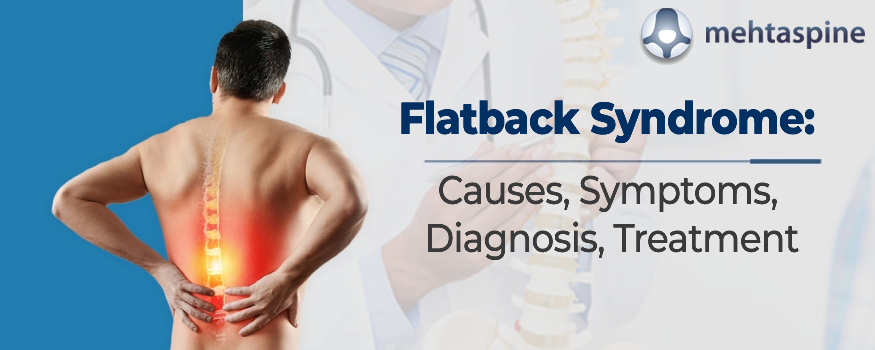Flatback Syndrome: Causes, Symptoms, Diagnosis and Treatment
Though the human spine looks straight when viewed from the back, it has its natural curve. Like a soft ‘S’, the spine has an inward-outward-inward curve at the upper, middle and lower back, when viewed from the side. These natural curves help in the even distribution of weight and impart flexibility to movements.
Flatback Syndrome is an abnormal spine condition where the human spine in the lower back loses its natural curves and becomes flat over time. This flattening of the lower back creates spinal imbalances causing the patient to lean forward, over time making it difficult to stand upright causing back or even leg pain. In this blog, we will look into the causes of this Flatback Syndrome, its symptoms and treatment for Flatback syndrome in the UK. Read on:
Causes of Flatback Syndrome:
Flatback Syndrome was first identified in patients who underwent scoliosis treatment using early scoliosis treatment options using Harrington spinal instrumentation. Fortunately, today’s scoliosis treatment options in UK are far more advanced and efficient in correcting scoliosis without any side effects. However, there are many causes for developing Flatback syndrome which is as follows:
- Degenerative Disc Disease
- Ankylosing Spondylitis
- Post-Laminectomy Syndrome
- Vertebral Compression Fractures
Symptoms of Flatback Syndrome:
The most common symptom of Flatback Syndrome is the change in the shape of the back. This may not be noticeable in some cases because the spine changes gradually over time. Some of the other common symptoms one must look out for are:
- Head leaned forward and feeling of falling forward.
- Prolonged pain in the back muscles, shoulder or neck.
- Fatigue & posture issues
- Muscle weakness and inability to stand or walk for a longer duration.
Diagnosis & Treatment for Flatback Syndrome:
A Spine Specialist in the UK begins diagnosis for Flatback Syndrome with medical history – incidence of back surgery and spinal deformities. The specialist then performs a musculoskeletal exam and neurological exam and gait exam to assess walking and X-ray to analyse the changes and visualize the sagittal alignment respectively.
Upon the confirmation of the syndrome, a spine specialist in the UK recommends the treatment plan based on the severity of the condition and its impact on the anatomy. Conservative treatment for Flatback Syndrome starts with physical therapy and exercises which include strengthening and stretching exercises for better mobility, movement, improved posture and muscular imbalance correction. In rare cases, spine surgeries like Polysegmental wedge osteotomy
Pedicel subtraction osteotomy or Posterior vertebral column resection may be recommended by a spine surgeon in UK to correct the syndrome. If you are looking for Flatback Syndrome treatment in UK, Children and Adult Spinal Surgeon, Mr Jwalant S. Mehta has helped rectify Flatback syndrome cases both surgically and non-surgically, you can contact him here: https://www.mehtaspine.co.uk/


